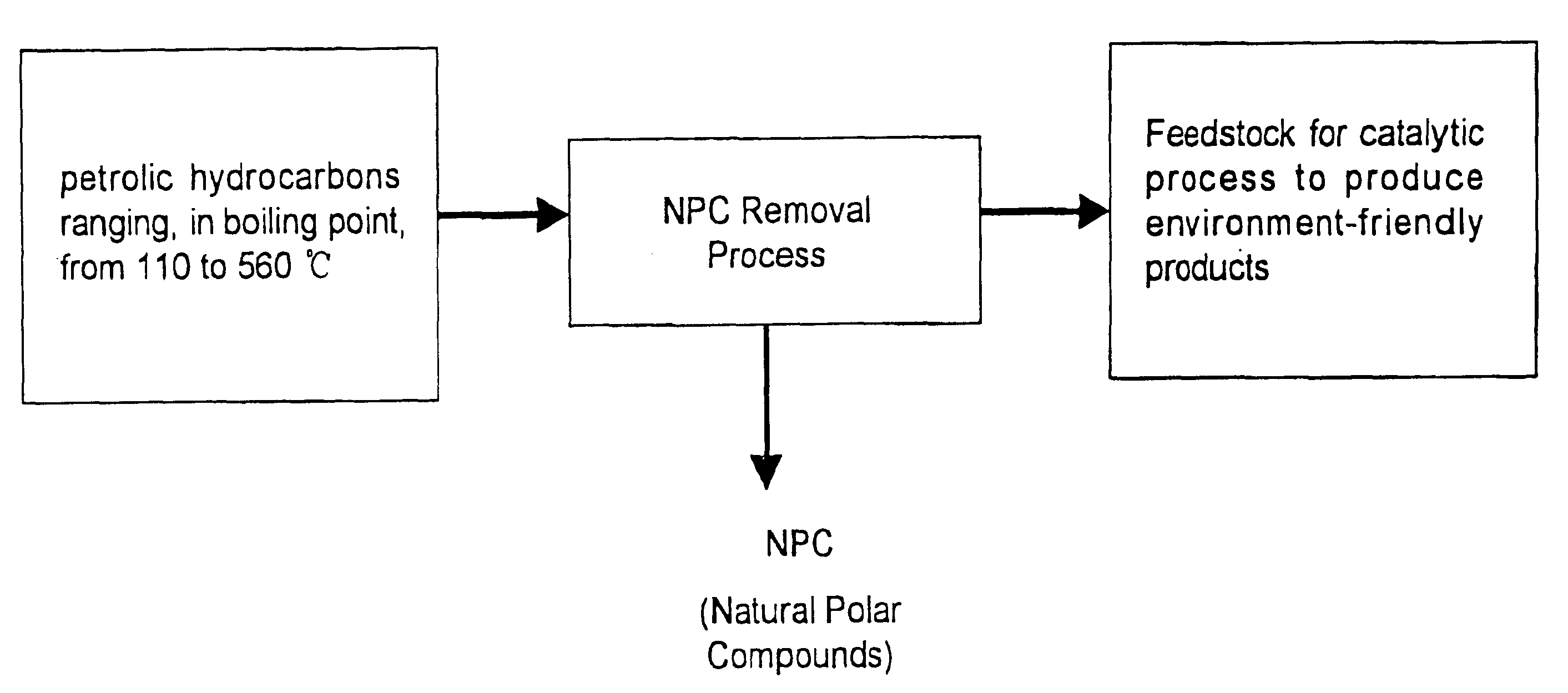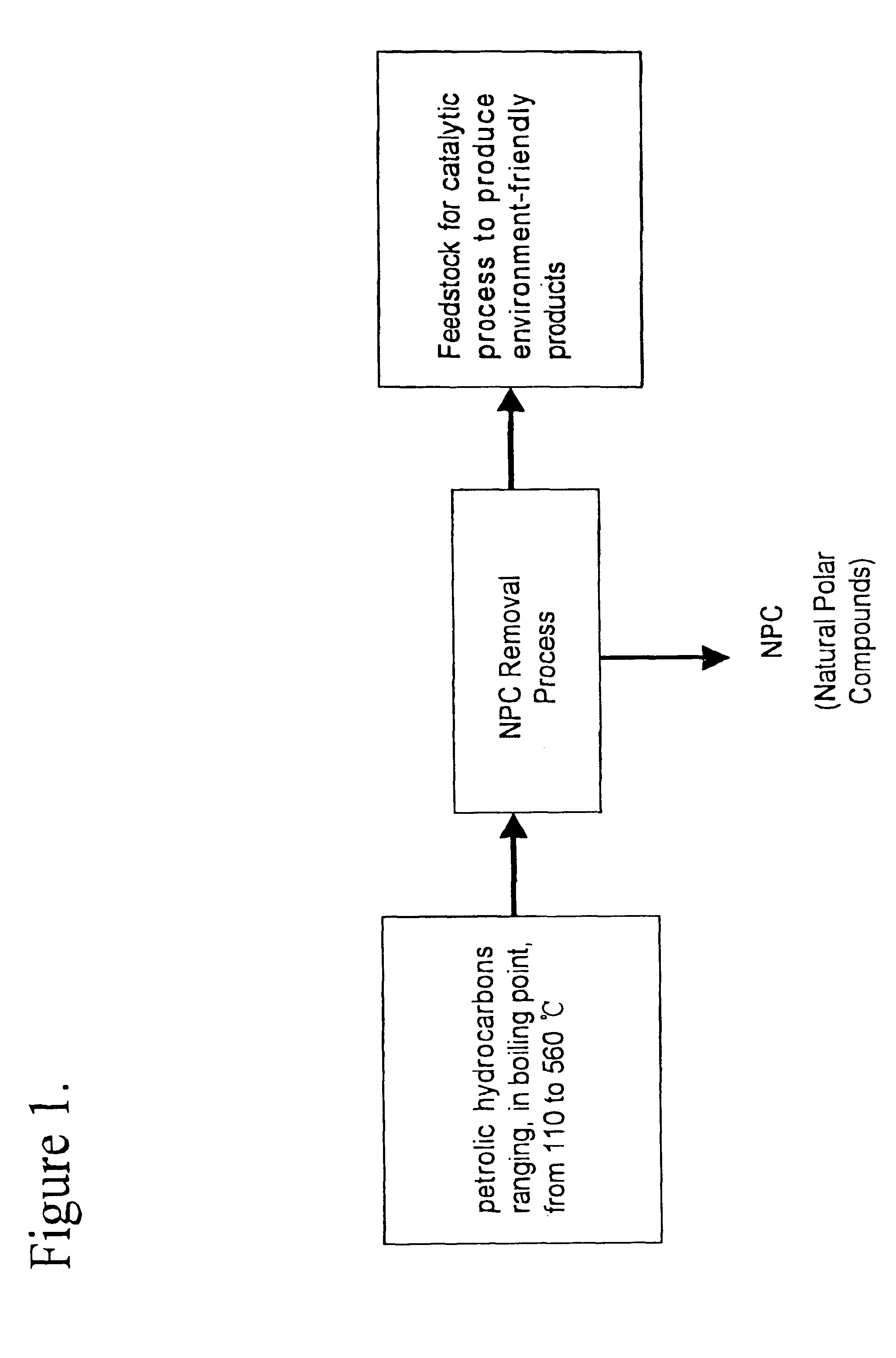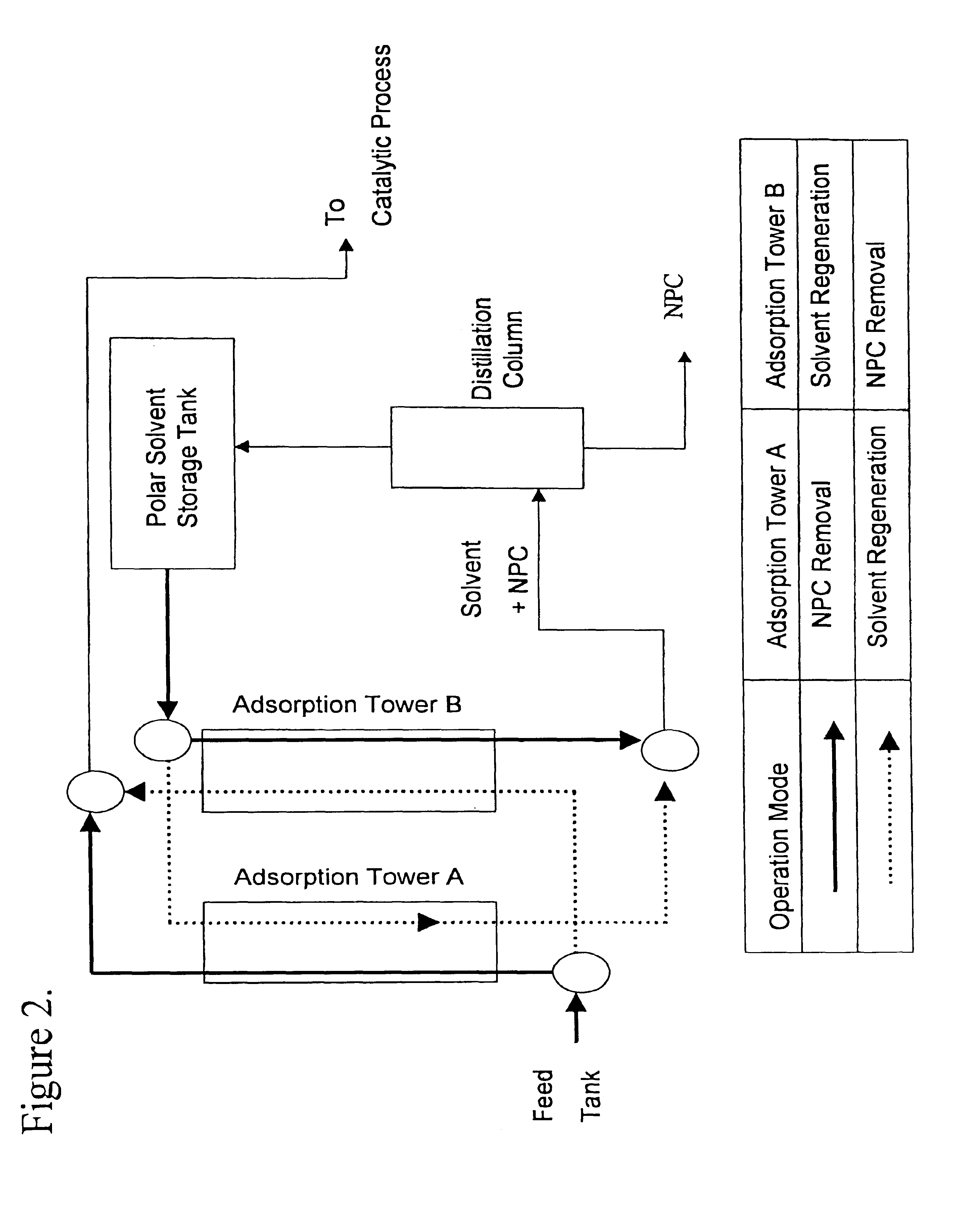Method for manufacturing cleaner fuels
a technology of cleaner fuels and fuels, which is applied in the direction of hydrocarbon oil treatment, additives, lubricant compositions, etc., can solve the problems of affecting the economic viability of existing and newly developed processes, affecting the efficiency of automobile after-treatment devices, and affecting the sulfur content of the fuel
- Summary
- Abstract
- Description
- Claims
- Application Information
AI Technical Summary
Benefits of technology
Problems solved by technology
Method used
Image
Examples
example 2
Silica gel, alumina and ion exchange resins, which are commonly used in column chromatography, were selected as adsorbents in the present invention. Physical properties of the adsorbents used are given in Table 2.
example 3
To compare the NPC removal effectiveness of different adsorbents, a series of experiments were conducted using the silica gels in Table 1, identified as "a" through "g", having diameters ranging from 0.3 to 0.5 mm. The adsorption / desorption procedure was as follows:
1) 40 cc of the adsorbent "a" was loaded in the inner tube of a concentric glass column.
2) The temperature of the adsorbent bed was maintained constant by circulating water through the outer jacket of the concentric column at 50.degree. C.
3) 400 cc of the LGO "A" was fed at a flow rate of 200 cc / hr into the inner tube where adsorbent was charged.
4) Upon completion of step 3), 80 cc of a non-polar solvent, hexane, was pumped into the inner tube at 200 cc / hr.
5) The inner tube was purged with nitrogen.
6) The products obtained from steps 3), 4), and 5) were mixed together.
7) The products of step 6) were separated from the solvent by a rotary evaporator, keeping the remnant as "NPC-removed LGO".
8) Upon completion of step 5), ...
example 4
The NPC obtained in Example 3 were analyzed for chemical species as follows:
1) 103.47 g (200 ml) of silica gel (Merck Silica gel 60, 70-230 mesh ASTM) were charged in a glass column (1 m.times.2.5 cm) for medium pressure chromatography.
2) 10.00 g of the NPC obtained in Example 3 were dissolved in n-pentane and this solution was poured onto the glass column, followed by flowing 500 ml of n-pentane, 500 ml of a mixed solvent of 1:1 n-pentane:toluene, 500 ml of toluene and 500 ml of methanol, in sequence, through the column.
3) Six effluent fractions F1 to F6 were obtained such that the aliquot amount was 250 ml each for the first four fractions (F1-F4), 500 ml for the fraction F5 and 300 ml for the last effluent, F6.
4) Each fraction was introduced to a rotary evaporator for solvent removal and the residue was weighed.
5) Qualitative analyses were conducted using an Antek Analyzer for nitrogen and sulfur content, a FT-IR analyzer, and a GC-MSD and a GC-AED for N and S species.
6) Using a ...
PUM
| Property | Measurement | Unit |
|---|---|---|
| boiling point | aaaaa | aaaaa |
| boiling point | aaaaa | aaaaa |
| boiling point | aaaaa | aaaaa |
Abstract
Description
Claims
Application Information
 Login to View More
Login to View More - R&D
- Intellectual Property
- Life Sciences
- Materials
- Tech Scout
- Unparalleled Data Quality
- Higher Quality Content
- 60% Fewer Hallucinations
Browse by: Latest US Patents, China's latest patents, Technical Efficacy Thesaurus, Application Domain, Technology Topic, Popular Technical Reports.
© 2025 PatSnap. All rights reserved.Legal|Privacy policy|Modern Slavery Act Transparency Statement|Sitemap|About US| Contact US: help@patsnap.com



